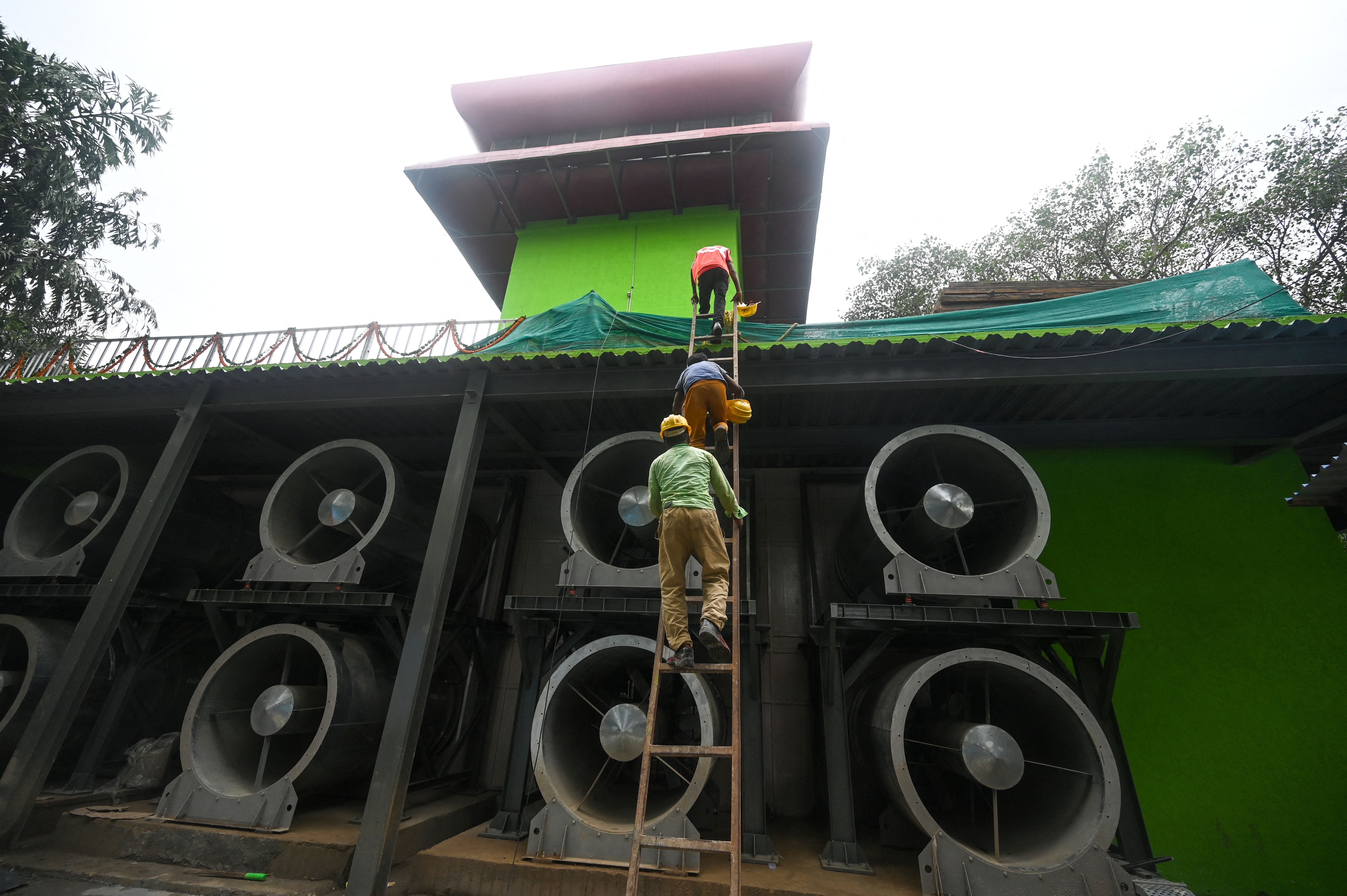Doctors warn Delhi’s toxic air pollution has left non-smokers with ‘smokers lungs’
On Monday, Delhi’s air quality level was 488 - the most severe level of pollution on a 0-500 scale
Doctors in Delhi say the city’s relentless, toxic air pollution is leaving non-smokers in their twenties and thirties with “smokers’ lungs”.
Northern India is in the grips of deadly levels of air pollution once again, threatening the health and lives of millions of people, with no permanent solution in sight.
On Monday, Delhi’s “Air Quality Index” hit 488 on the 0-500 scale, according to the Indian government.
Monday was the fifth, straight day when air pollution remained in the “severe” category of 400 and over, nearly 10 times the healthy limit.
October to December has become “air pollution season” for millions in Delhi, surrounding areas of the capital, and other densely-populated northern cities like Agra, Lucknow and Kanpur.
Breathing in the thick smog is akin to smoking 25-30 cigarettes a day, and doctors told The Independent that they have seen a steady increase in patients with sore throats, headaches and breathlessness in recent days.
“There are several cases of short-term issues with breathlessness, sore throat and irritation,” said Dr Anuj Aggarwal from Delhi’s Safdarjung Hospital, one of India’s largest government hospitals.
“There is also an increase in cases of asthma attacks.”
Increases in fine particle pollution, called PM2.5, are also responsible for lung and heart-related issues developing in healthy people. Doctors say such chronic air pollution reduces lung capacity.
”Many young people who have been in Delhi for a long period of time, who have never smoked, now have a smoker’s lung,” said Dr Sumit Ray, head of critical care at Holy Family Hospital, in the city’s southeast.
“So a 40-year-old will have the lungs of a person who has smoked for 20 years almost,” he says.
The pollution season started earlier than usual this year, due to less than normal rainfall, causing concern that the period of chronically poor air is getting longer.
Delhi’s air quality is poor for most of the year due to transport, construction and industrial emissions. However, it worsens significantly at the start of November when smoke from agricultural fires, set after harvesting grains like paddy and wheat, flows into the city. The dire conditions can be exacerbated by wind direction and fog which traps pollutants.
In October, air quality levels in Delhi were the worst since 2020, according to the Indian Central Pollution Control Board.

Beyond the short-term health issues, doctors warn that its the unseen impacts of prolonged exposure to air pollution that people should be worried about.
“It [chronic pollution] does not just put the kid at high risk of respiratory disorders but impacts the overall development of child and puts them at risk of several chronic diseases like diabetes, hypertension etc,” says Dr Rakesh Parikh, a diabetologist, based in Jaipur.
“Prolonged and repeated exposure to such high levels of poullution can adversely affect the overall health of any individual,” he adds.
Air pollution is already known to shorten the average life expectancy of Delhi residents by approximately 11.9 years, a 2023 study from University of Chicago’s Energy Policy Institute found.
That research found that over 64 per cent of Indians, approximately 900 million people, now live in areas that exceed India’s national air quality standard, which is more lenient than the World Health Organisation limit.
With such a high cost for human health, the crisis receives surprisingly little attention in India’s national politics.
At state level, it remains mired in a blame game between the governments of Delhi and neighbouring Punjab and Haryana, where farmers set fire to the crop stubble in their fields.
Delhi Environment Minister Gopal Rai recently claimed the state government is on a “war footing” to curb pollution levels but that sources outside the city are causing more pollution.
City officials have rolled out last-minute measures in an attempt to limit the impact of pollution on the population including closing primary schools, halting construction work, reducing the number of cars on the roads, and asking people to mask up and stay home.
But experts say the repeated failure of authorities to act on the root causes of the annual crisis is a clear sign of lack of political will.
“The annual air emergency in Delhi is neither a new problem, nor one that comes without warning,” Ann Harrison, climate advisor at Amnesty International, said in a statement.
“The government’s repeated failure to protect people from exposure to hazardous air in Delhi and surrounding areas risk violating their human rights to life and health.”

In the past, government measures to curb air pollution included policies of sprinkling water on the roads to reduce dust and building two 80ft high “smog towers”.
The towers, which cost more than $2million (USD) each, are supposed to clean the air but have been deemed by scientists to be largely ineffective.
Shweta Narayan, global climate and health campaigner at the organisation Health Care Without Harm, says most of these solutions have been “posturing” and “hogwash”.
The air pollution crisis “needs to be treated as a human problem and not a technical problem,” she told The Independent.
Ms Narayan noted that stricter regulations and enforcement was needed at every level.
“We can’t keep blaming the same actors over and over again,” she said.
“We need the courage to stand up to powerful industries who are emitting [pollutants] knowing that there won’t be any consequences.”
Join our commenting forum
Join thought-provoking conversations, follow other Independent readers and see their replies
Comments
Bookmark popover
Removed from bookmarks